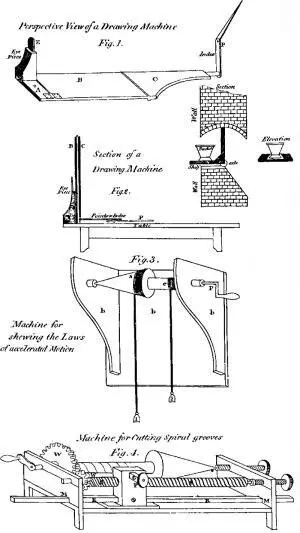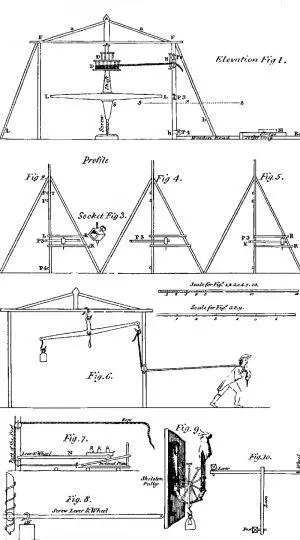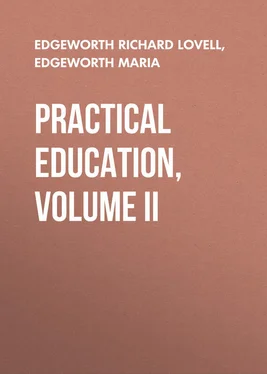Richard Edgeworth - Practical Education, Volume II
Здесь есть возможность читать онлайн «Richard Edgeworth - Practical Education, Volume II» — ознакомительный отрывок электронной книги совершенно бесплатно, а после прочтения отрывка купить полную версию. В некоторых случаях можно слушать аудио, скачать через торрент в формате fb2 и присутствует краткое содержание. Жанр: Прочая научная литература, foreign_edu, foreign_antique, foreign_prose, на английском языке. Описание произведения, (предисловие) а так же отзывы посетителей доступны на портале библиотеки ЛибКат.
- Название:Practical Education, Volume II
- Автор:
- Жанр:
- Год:неизвестен
- ISBN:нет данных
- Рейтинг книги:3 / 5. Голосов: 1
-
Избранное:Добавить в избранное
- Отзывы:
-
Ваша оценка:
- 60
- 1
- 2
- 3
- 4
- 5
Practical Education, Volume II: краткое содержание, описание и аннотация
Предлагаем к чтению аннотацию, описание, краткое содержание или предисловие (зависит от того, что написал сам автор книги «Practical Education, Volume II»). Если вы не нашли необходимую информацию о книге — напишите в комментариях, мы постараемся отыскать её.
Practical Education, Volume II — читать онлайн ознакомительный отрывок
Ниже представлен текст книги, разбитый по страницам. Система сохранения места последней прочитанной страницы, позволяет с удобством читать онлайн бесплатно книгу «Practical Education, Volume II», без необходимости каждый раз заново искать на чём Вы остановились. Поставьте закладку, и сможете в любой момент перейти на страницу, на которой закончили чтение.
Интервал:
Закладка:
The roller or cone (or both together) which it is required to cut spirally, must be furnished with a handle, and a toothed wheel w , which turns a smaller wheel or pinion w . This pinion carries with it a screw s , which draws forward the puppet p , in which the graver of chisel g slides without shake . This graver has a point or edge shaped properly to form the spiral groove, with a shoulder to regulate the depth of the groove. The iron rod r , which is firmly fastened in the puppet, slides through mortices at mm , and guides the puppet in a straight line.

Plate 1.
The rest of the machine is intelligible from the drawing.
A simple method of showing the nature of compound forces was thought of at the same time. An ivory ball was placed at the corner of a board sixteen inches broad, and two feet long; two other similar balls were let fall down inclined troughs against the first ball in different directions, but at the same time. One fell in a direction parallel to the length of the board; the other ball fell back in a direction parallel to its breadth. By raising the troughs, such a force was communicated to each of the falling balls, as was sufficient to drive the ball that was at rest to that side or end of the board which was opposite, or at right angles, to the line of its motion.
When both balls were let fall together, they drove the ball that was at rest diagonally, so as to reach the opposite corner. If the same board were placed as an inclined plane, at an angle of five or six degrees, a ball placed at one of its uppermost corners, would fall with an accelerated motion in a direct line; but if another ball were made (by descending through an inclined trough) to strike the first ball at right angles to the line of its former descent, at the moment when it began to descend, it would not, as in the former experiment, move diagonally, but would describe a curve.
The reason why it describes a curve, and why that curve is not circular, was easily understood. Children who are thus induced to invent machines or apparatus for explaining and demonstrating the laws of mechanism, not only fix indelibly those laws in their own minds, but enlarge their powers of invention, and preserve a certain originality of thought, which leads to new discoveries.
We therefore strongly recommend it to teachers, to use as few precepts as possible in the rudiments of science, and to encourage their pupils to use their own understandings as they advance. In mechanism, a general view of the powers and uses of engines is all that need be taught; where more is necessary, such a foundation, with the assistance of good books, and the examination of good machinery, will perfect the knowledge of theory and facilitate practice.
At first we should not encumber our pupils with accurate demonstration. The application of mathematics to mechanics is undoubtedly of the highest use, and has opened a source of ingenious and important inquiry. Archimedes, the greatest name amongst mechanic philosophers, scorned the mere practical application of his sublime discoveries, and at the moment when the most stupendous effects were producing by his engines, he was so deeply absorbed in abstract speculation as to be insensible to the fear of death. We do not mean, therefore, to undervalue either the application of strict demonstration to problems in mechanics, or the exhibition of the most accurate machinery in philosophical lectures; but we wish to point out a method of giving a general notion of the mechanical organs to our pupils, which shall be immediately obvious to their comprehension, and which may serve as a sure foundation for future improvement. We are told by a vulgar proverb, that though we believe what we see, we have yet a higher belief in what we feel . This adage is particularly applicable to mechanics. When a person perceives the effect of his own bodily exertions with different engines, and when he can compare in a rough manner their relative advantages, he is not disposed to reject their assistance, or expect more than is reasonable from their application. The young theorist in mechanics thinks he can produce a perpetual motion! When he has been accustomed to refer to the plain dictates of common sense and experience, on this, as well as on every other subject, he will not easily be led astray by visionary theories.

Plate 2.
To bring the sense of feeling to our assistance in teaching the uses of the mechanic powers, the following apparatus was constructed, to which we have given the name Panorganon.
It is composed of two principal parts: a frame to contain the moving machinery; and a capstan or windlass , which is erected on a sill or plank, that is sunk a few inches into the ground: the frame is by this means, and by six braces or props, rendered steady. The cross rail, or transom , is strengthened by braces and a king-post to make it lighter and cheaper. The capstan consists of an upright shaft, upon which are fixed two drums ; about which a rope may be wound up, and two levers or arms by which it may be turned round. There is also a screw of iron coiled round the lower part of the shaft, to show the properties of the screw as a mechanic power. The rope which goes round the drum passes over one of the pulleys near to the top of the frame, and under another pulley near the bottom of the frame. As two drums of different sizes are employed, it is necessary to have an upright roller to conduct the rope in a proper direction to the pulleys, when either of the drums is used. Near the frame, and in the direction in which the rope runs, is laid a platform or road of deal boards, one board in breadth, and twenty or thirty feet long, upon which a small sledge loaded with different weights may be drawn. Plate 2. Fig. 1.
F. F. The frame.
b. b. Braces to keep the frame steady.
a. a. a. Angular braces to strengthen the transom; and also a king-post .
S. A round, taper shaft, strengthened above and below the mortises with iron hoops.
L L. Two arms, or levers, by which the shaft, &c. are to be moved round.
D D. The drum, which has two rims of different circumferences.
R. The roller to conduct the rope.
P. The pulley, round which the rope passes to the larger drum.
P 2. Another pulley to answer to the smaller drum.
P 3. A pulley through which the rope passes when experiments are tried with levers, &c.
P 4. Another pulley through which the rope passes when the sledge is used.
Ro. The road of deal boards for the sledge to move on.
Sl. The sledge, with pieces of hard wood attached to it, to guide it on the road.
As this machine is to be moved by the force of men or children, and as their force varies not only with the strength and weight of each individual, but also according to the different manner in which that strength or weight is applied; it is, in the first place, requisite to establish one determinate mode of applying human force to the machine; and also a method of determining the relative force of each individual whose strength is applied to it.
Hang a common long scale-beam (without scales or chains) from the top or transom of the frame, so as that one end of it may come within an inch of one side or post of the machine. Tie a rope to the hook of the scale-beam, where the chains of the scale are usually hung, and pass it through the pulley P 3, which is about four feet from the ground; let the person pull this rope from 1 towards 2, turning his back to the machine, and pulling the rope over his shoulder – Pl. 2. Fig. 6. As the pulley may be either too high or too low to permit the rope to be horizontal, the person who pulls it should be placed ten or fifteen feet from the machine, which will lessen the angular direction of the cord, and the inaccuracy of the experiment. Hang weights to the other end of the scale-beam, until the person who pulls can but just walk forward, pulling fairly without propping his feet against any thing. This weight will estimate the force with which he can draw horizontally by a rope over his shoulder. 22 22 Were it thought necessary to make these experiments perfectly accurate, a segment of a pulley, the radius of which is half the length of the scale-beam, should be attached to the end of the beam; upon which the cord may apply itself, and the pulley (P 3) should be raised or lowered, to bring the rope horizontally from the man's shoulder when in the attitude of drawing.
Let a child who tries this, walk on the board with dry shoes; let him afterwards chalk his shoes, and afterwards try it with his shoes soaped: he will find that he can pull with different degrees of force in these different circumstances; but when he tries the following experiments, let his shoes be always dry, that his force may be always the same.
Интервал:
Закладка:
Похожие книги на «Practical Education, Volume II»
Представляем Вашему вниманию похожие книги на «Practical Education, Volume II» списком для выбора. Мы отобрали схожую по названию и смыслу литературу в надежде предоставить читателям больше вариантов отыскать новые, интересные, ещё непрочитанные произведения.
Обсуждение, отзывы о книге «Practical Education, Volume II» и просто собственные мнения читателей. Оставьте ваши комментарии, напишите, что Вы думаете о произведении, его смысле или главных героях. Укажите что конкретно понравилось, а что нет, и почему Вы так считаете.












